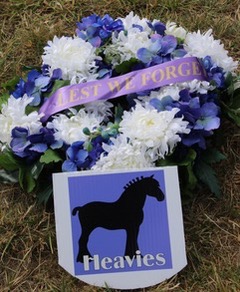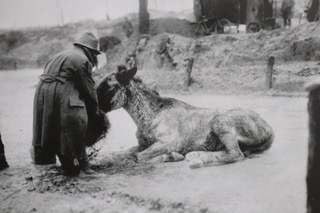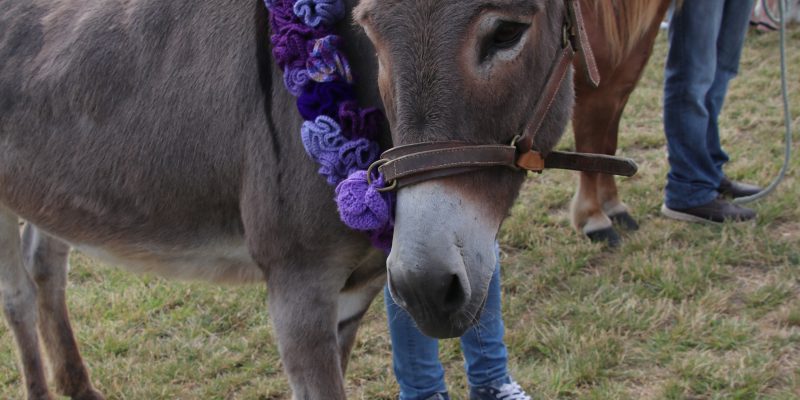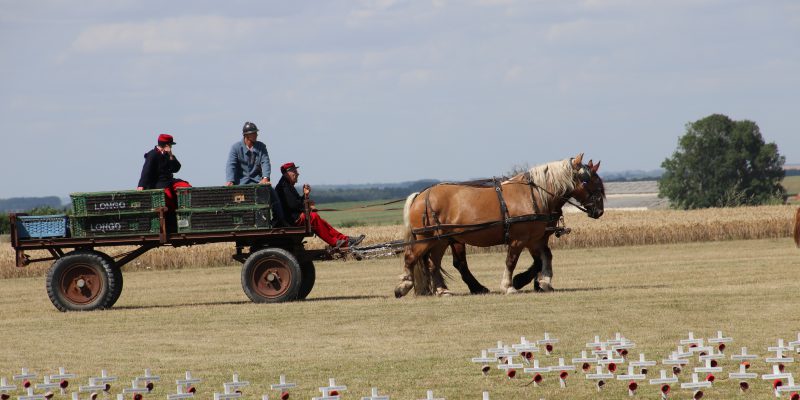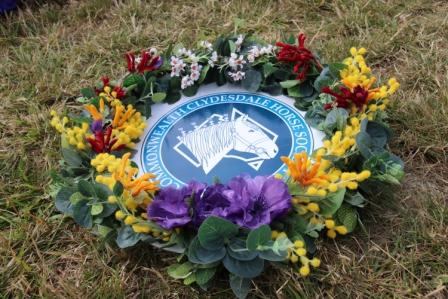SERVICE FOR THE DEDICATION OF THE AUSTRALIAN WAR ANIMAL MEMORIAL, POZIERES, FRANCE 21ST JULY, 2017
With many other members of the CCHS Australia, Max and I were attending this year’s Royal Highland Show in Edinburgh, and as we were the only Australians staying on through July, the Federal Council asked Max if he could go across to France for the dedication of the new Australian War Animal Memorial in Pozieres. We were travelling with Ivor Barber’s granddaughter, Lucy Buffon, so the three of us were very honoured to be present for the service.
The memorial service took place at the Windmill Site on the outskirts of the now picturesque town of Pozieres, in Picardy. This was the site of memorable and bloody battles for the region of the Somme during the First World War. Behind the small mound that is all that remains of the windmill (le Moulin Pozieres) is a very moving field of small crosses set out in the array of the rising sun, the famous badge of the AIF. At the nearby Australian War Memorial for the men of the first Division of the AIF, a board reads: "Over seven weeks in 1916, more than 6,700 soldiers of the Australian Imperial Force died in the countryside around the windmill, more than on any other single battlefield. It was captured on 4th August by the Australian troops”. The many crosses simply read “Australia 1916 Pozieres”.
Now, thanks to Nigel Allsopp and all members of AWAMO, just behind the windmill site, very close to the road, there are four new memorials - the Australian War Animal Memorial; the New Zealand War Animal Memorial; a memorial for animals from all other countries; and at the front of the aisle leading through them all a small plaque with a statue of St Francis, to the members of the Veterinary Army Corps.
The service was wonderful, and very well attended by hundreds of people: by the French army personnel with their dogs; by the Mayor of Pozieres, Monsieur Bernard Delattre; by visiting Australian dignitaries (see photo) and clergy; and by many local people for whom the history of the battles for the Somme seems to be painfully alive and relevant today - if they dig in their gardens, the ground produces endless traces of war and of human burials. The locals also brought their own array of donkeys, dogs, horses, and pigeons, many wearing the purple colour which is the designated colour for war animals. One horse wore a beautiful rug sewn with purple poppies that came from all over Australia. The speeches from Dr Brendon Nelson, Dr Harry Cooper, Major Kendall Crocker (currently the sole full-time veterinarian with the ADF) and Nigel Allsopp were all deeply moving, and spoke of the sacrifices that the animals involved in the war made, with no choice in the matter. Millions of light and heavy horses, mules, donkeys, dogs and pigeons were killed during the First World War, and this is the first time they have been honoured in this way. The ceremony ended with a beautiful locally composed song, the release of a flock of pigeons from a cart pulled by two Belgian horses, and the party then moved to the Pozieres Town Hall for champagne, delightful pastries and many speeches and presentations.
Max was asked to represent the Commonwealth Clydesdale Horse Society Australia and to lay a wreath in memory of the heavy horses that died in the war, now 100 years ago. As we were going to be there, the Shire Horse Society Australia also asked us to present a wreath on their behalf, which Lucy and I laid. We brought the Clydesdale Society wreath over with us: it was beautifully made by Bradford Potter from Tomerong in NSW, from silk eucalyptus leaves, wattle, kangaroo paw and Geraldton wax plant, and of course purple poppies, with the insignia of the Clydesdale Society in the centre. I believe it is to be placed in the museum in Pozieres for posterity. It was an immense honour to be present at the service, and we spent 4 more days in the Somme, exploring the region and visiting the many Australian and Commonwealth War Memorials - it was an experience to remember for ever.
The plaque on the international war animal memorial reads: “ To all the animals, they held no malice, they served all nations, they worked and died in the service of man”.
The countryside surrounding Pozieres is today a picturesque landscape of rolling fields of wheat and corn.
Written by Kristin Marriott




